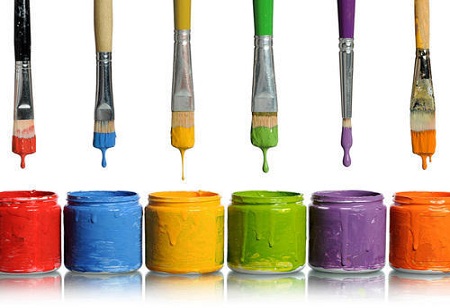Colors play a major role in the world we dwell in as they sway thinking, change actions, and cause reactions. Colors can either irritate or soothe your eyes, raise blood pressure or suppress appetite, and most importantly used in the right ways, colors can also save on energy consumption. Coloring matters and there are two types of colorants
dyes and pigments. However, they have been exploited by human beings mainly for their aesthetic values and are used in embellishing numerous articles.
Dyes are soluble substances that are used mainly to pass color to the substrate. They find applications fundamentally in the textiles and leather industries. There is a wide range of dyes manufactured by dyes manufacturers, however in our country disperse, reactive and direct dyes are the most commonly used ones. Pigments are insoluble substances. These can either be in powdered or granular form and transmit color by reflecting only certain light rays.
The global dyes and pigments market size is anticipated to reach USD 54.64 billion by 2026, growing at a CAGR of 4.9 percent over the forecast period. Growing demand for dyes and pigments from numerous industries for various applications such as textiles, paints, and coatings, construction is anticipated to fuel the market growth. However, the surge in demand for dyes and pigments from the paints and coatings industry is one of the major factors predicted to bolster the market growth. The enterprises that are into manufacturing dyes and pigments are venturing into enhancing their products by utilizing advanced technologies for efficient removal of environmental and hazardous pollutants during the manufacturing process.
Preventing counterfeiting activities
Inks – the liquids produced from dyes and pigments serve numerous purposes that not only include writing, printing, and tattooing but also to prevent anti-counterfeiting activities. For example, special inks are produced for printing currency notes. These react with the cellulose in the paper and produce inimitable colors and textures. This makes it difficult to replicate. Since, the majority of dyestuffs are commodities there is not much product differentiation and duplication of products is easy. The industry could leverage technology to come up with newer products to meet the bottom of the pyramid needs with innovative solutions. New technologies such as reduction with hydrogen and sulphonation with liquid sulfur trioxide could be adopted as they are clean technologies and give better yields, thereby reducing effluents.
UN Department of Economic and Social Affairs (DESA) says, “Approximately 2/3rd of the global population will move to the urban areas by 2050, anticipated to increase by 13 percent from the current levels.” Predominantly, around 90 percent of this increase is expected to be from the developing countries of continents such as Africa and Asia, where the urbanization process is getting further strengthened owing to the economic growth. As a consequence, the expansion of residential and commercial areas in these countries will fuel the demand for dyes and pigments over the forecast period.
